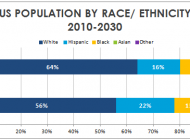In the modern world, news unceasingly streams through social media, texts, emails, and messaging apps. Society has to come to accept this reality, thus now the expectation is that individuals do not need to seek out the news–it will stream into their ears without a conscious thought. So how has this changed Americans’ attitudes toward the news? How has news consumption evolved in the past decade with the ever-growing connectedness of the world? What are the demographics of news consumers? A two-part survey by Pew Research Center (PRC), in association with the John S. and James L. Knight Foundation, sought to answer these questions.
Read how news consumption has changed and continues to change.
The first part of the survey was conducted between January 12 and February 8, 2016, among 4,5654 American adults who are members of PRC’s American Trends Panel. The second part, which occurred from February 24 to March 1, 2016, consisted of 14 short, online surveys; 2,078 individuals participated and completed at least 10 of the 14 surveys.
The overarching findings indicate that the American public is cautious yet discerning in its valuation of news and its sources. About 70% of U.S. adults follow national and local news somewhat or very closely; 65% follow international news with a comparable regularity. 81% of Americans get some of this news through websites, apps, or social media. News intake is increasingly mobile–of those who use both desktop and mobile devices, more than 50% prefer mobile. Moreover, American individuals increasingly value friends and family to reveal the news, yet still maintain strong ties to news organizations.

Approximately 38% of Americans get news online, whether through social media, websites, or apps. TV still remains the most popular news source, as 57% of survey respondents often get news via this source. Print newspapers are unpopular with Millennials and increase in popularity as Americans increase in age.

Interestingly, news consumers are more likely to receive the news from news organizations than from friends and family, yet will trust both sources with the same veracity.

Most American adults (85%) share news by “word of mouth,” instead of with “a digital method” (13%).

Millennials are overwhelmingly unenthusiastic about news, yet are more likely to get their news online.
To read the full results of the PRC’s survey on news consumption, visit the website here.
Tags: demographic trends modern news consumers news consumption news trends social trends












